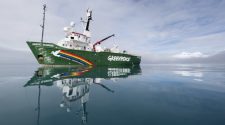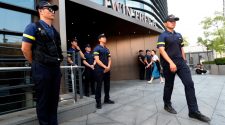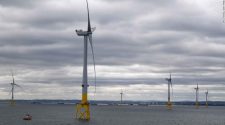WICHITA, Kan. (KWCH) – April 26, 1991 was not a typical spring day in Kansas, The conditions set up for a potentially dangerous evening of storms. While people in the Wichita area had the heads up to keep their eyes and ears open for warnings that night, the devastation that came through was unexpected.
Dick Elder was the Meteorologist in Charge at the National Weather Service in Wichita on the day 30 years ago that would end with 55 tornadoes, 32 reaching at least F2 strength and one reaching F5, tearing through part of the Wichita area, destroying much of the Andover community. That tornado would become known as the Andover tornado
As conditions lined up for a potentially dangerous set, Elder said there were nerves, knowing that something was going to happen.
“Did we think something was going to hit the way that it did? I don’t think any of us thought that,” he said.
The biggest tornado of April 26, 1991, and one of the bigger tornadoes on record started near Clearwater at 5:49 p.m. I traveled north, reaching Haysville at 6:20 p.m. The tornado went through McConnell Air Force Base in southeast Wichita a little before 6:30 p.m.
Police officers in Andover recognized that the outdoor sirens had failed, so they started sounding their own sirens to get people’s attention. The hardest hit area was the Gold Spur mobile home park with F5 damage and 13 deaths.
“What determined the F5 damage was finding vehicles that had been carried for well over a mile,” Elder said.
After nearly 90 minutes on the ground, the Andover tornado finally ended at 7:15 p.m., west of El Dorado. Thanks to trained weather spotters, Andover had about 10 minutes to prepare for the tornado. Radar technology during the storm was less than desirable. A black and white, noisy display had a lot of clutter.
“You couldn’t really see it because the beam of the radar was so low. The radar wasn’t much good at all,” Elder said.
The radar used on April 26, 1991 dated back to 1957. What’s used much more efficiently today was still in development in Norman, Oklahoma.
From a devastating force of nature came some good in the long run.
“From Andover, it really put the impetus to get these radars deployed,” Elder said, speaking of the modern technology that greatly expands warning times and gives clearer pictures of what’s happening.
Another change since Andover is that now, tornadoes are rarely issued for entire counties. They are more specific to the storm’s path. Thirty years changed our technology and distances our memories of April 26, 1991, but even today, it does serve as a solid reminder to be prepared for the unexpected.
“I think everybody, I hope, whether they live in a mobile home or a tent, I don’t care where it is, I hope everybody has taken a minute or two and said, ‘you know, if something like this is going to happen, where are we going to go?’’ Elder said.
Copyright 2021 KWCH. All rights reserved.

















